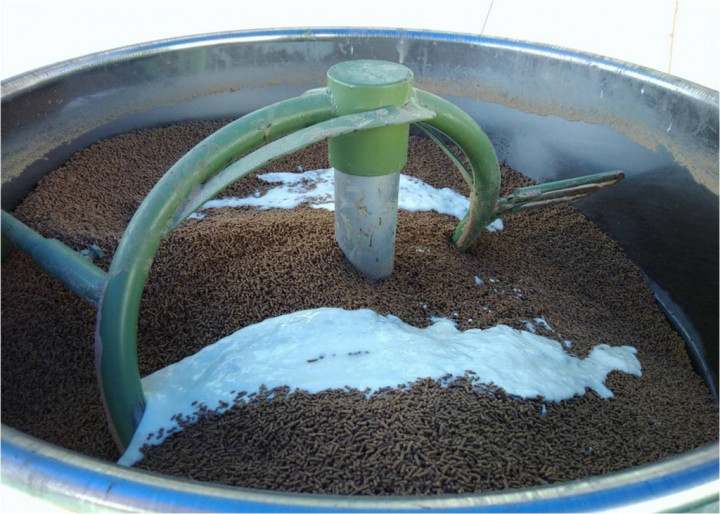
Taipei, Oct. 15 (CNA) A yogurt created by the Fisheries Research Institute (FRI) is strengthening the immune systems and growth of shrimp and fish, helping them fight off diseases that have been eroding their farmers' profits, the FRI said Friday.
The institute, an agency under the Cabinet-level Council of Agriculture, said the yogurt has been proven to accelerate the growth of fish and shrimp and mitigate the negative effects of pathogens that are especially aggressive in the summer.
In an interview with CNA, FRI Aquaculture Division research fellow Huang Mei-ying (黃美瑩) said the yogurt was developed in response to complaints by commercial fish farmers in Kaohsiung that pathogenic bacteria were infecting their fish and costing them money.
The FRI decided to look into the problem and quickly sought to determine if the use of probiotics could help.
What they found, according to Huang, was an earlier FRI study showing that a "B4 lactic acid bacteria" extracted from bass was a natural probiotic that effectively took on aquatic pathogens.
The study also found that an enzyme secreted by the bacteria naturally produced a type of prebiotic known as glucan when introduced to sucrose, indicating that the B4 lactic acid bacteria could be the answer fish farmers were looking for.
The theory was especially appealing because FRI research had found that combining probiotics, such as lactic acid bacteria, and more expensive prebiotics, such as glucan, yielded the best results.
The FRI has been testing their idea for more than a year by adding the B4 bacteria into yogurt and mixing the yogurt into fish feed, Huang said separately in a statement issued Friday.
In one experiment, the yogurt and feed mixture helped farm-raised orange-spotted grouper grow and bolstered their defenses against pathogens.
Another experiment, conducted at a tilapia farm in Hunei District in Kaohsiung this year, also delivered positive results, Huang said.
The yogurt was introduced as 1 percent of the feed given to a group of tilapia for two months, and when the fish were harvested at the end of May, they weighed an average of 570 grams and did not have any pathogens.
In contrast, when the control group of tilapia not fed the yogurt was harvested in mid-June, the fish were found to have an average weight of 467 gm and were widely infected by a streptococcus bacteria, she said.
An earlier experiment conducted in Kaohsiung in the summer of 2020 found that tilapia given the yogurt mixture also got streptococcus infections, but they were eliminated after three days when given medication, compared to seven days for the control group.
Overall, the B4 lactic acid bacteria yogurt has helped the fish grow bigger and healthier, at a cost that farmers can afford, Huang said.
The extra feed cost of NT$0.5 (US$0.018) per kilogram is far cheaper than the cost of combining other probiotics and prebiotics, and the improved feed can help tilapia farmers earn an extra NT$150,000 in income per hectare farmed, she said.
According to Huang, the FRI has now transferred its B4 lactic acid bacteria technology to four probiotics companies to manufacture, and applied for a patent for the technical application of the yogurt into feeds with the Taiwan Intellectual Property Office.
Further applications of the yogurt could be adopted in other fields aquatic farming, helping reduce the amount of artificial chemicals used in the raising of aquatic animals, Huang said.